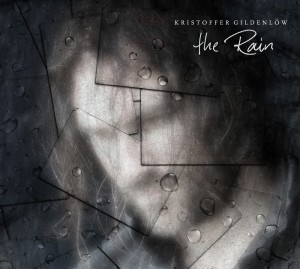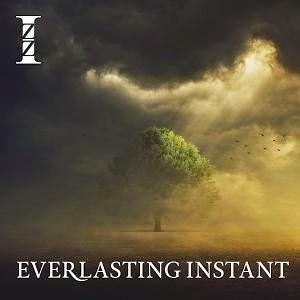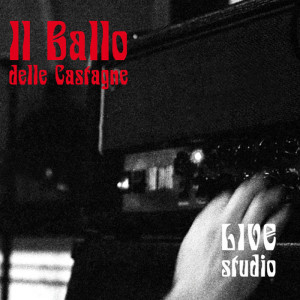by Angelo Hulshout | Mar 27, 2016 | Uncategorized
When I interviewed Kristoffer Gildenlöw last year, he told me that his debut album Rust was inspired by a dark period in his life. A period that he needed to come to terms with. His next album, the one I’m listening to for the umpteenth now, would be less dark he expected. To some extend he was right, but The Rain is far from party music. The concept album tells the story of a man fighting his oncoming dementia, giving in only shortly before dying. A theme that is all to common, in a world where we are still dealing with Alzheimer. From that perspective, giving some tracks of the album their first airplay during Rock against Dementia on March 19th of this year was a logical thing to do.
After the sounds of rain, the first violin notes of After the Rain Part II (Part I is on the 200 copies limited edition bonus EP) make clear that this album is full of emotion and melancholy. Kristoffer’s voice carries the melancholy, which is joined by Paul Coenradie’s equally emotional guitar to set the stage for the rest of the album.
On Holding On Pt. I Kristoffers voice is joined by that of violinist Anne Bakker, resulting in a duet full of questions and despair. The effect of the vocals, and the use of vocals as another instrument becomes even stronger on Seeking The Sun Pt. I, where a complete choir (Popkoor Zuilen) joins in with the other two voices to create an intricate and touching layering of melodies. This matches perfectly with the piano and guitar melodies in the instrumental The Sun Pt II.
The short piano (Fredrik Hermansson) and male vocal piece Worthy found me staring out the window into the dark of the night, ‘waking up’ to the slightly faster violin (and cello?) of Holding On Pt II. This leads up to the slow See it All, which starts with dark drums and then a piano to accompany Kristoffer’s low voice, again joined by the choir – putting down the emotions of the dementing man wanting to see it all once more. The cello (Maaike Peters) and violin on Peripheral Memory, accompanied by a low guitar riff and almost haunting drums (by Gazpacho‘s Lars Erik Asp) lead to the soft, slow Breath In, Breath Out. Here, the man gives in, knowing the end is near. The piano and Kristoffer’s voice give me shivers, reminding me of family members who died, no longrer aware of who they themselves and those around them were.
With The Evening, which starts small and ends big, and the acoustic It was me, the album works it’s way into the haunting Drizzle. This song starts with a very low voice (Norman Ebecilio) and the sound of chains and cart wheels and develops into something that is not a blues but certainly has the feel of one. A very dark one that ends in the sound of rain.
The complicated melody of the instrumental second half of She is one of the highlights of the album for me – with a lead role for the alt violin. After this, three short tracks All for You, and The Funeral Pt I and II remain, reflecting the sad ending to a sad story – with the piano and the sound of rain and distant church bells ending the album.
An intricate composition, where lyrics, vocals melodies and instruments work together as an orchestra to convey a story. Production of the album is crystal clear, making all the layers of the music shine through. Highly recommended, but requires attentive listening.
by Angelo Hulshout | Jan 16, 2016 | Uncategorized
When I ordered David Bowie’s Blackstar at the end of 2015, I was excited – looking forward to reviewing the album, as my first review of 2016. I was never a big fan of Bowie, until just over a year ago, and it was magical to discover his first 14 albums while getting the announcements of a new album that was ‘going to be different than anything he’d done before’. The video for the title track, and the audio track for Lazarus, which only got video added the day before the album was released, certainly showed that Bowie was up to something very new. Electronic music, with a jazzy, avant garde feel to it, and weird images of a blind folded Bowie in the video – indeed things he had never done before.

After getting to hear his 80s work, which I didn’t like at all at the time, and discovering his 60s and 70s releases 30 years later, I can only confirm the obvious: Bowie was a chameleon, and very eclectic artist. Writing in past tense here, only a week after the release of Blackstar gives me the shivers. I’ve never been witness to something as unexpected as Bowie’s death, two days after releasing this magical album. Magical, and obviously created by a man who was aware of what was going to happen, but not ready to stop exploiting his own brilliant creativity.
With a lot of things in the world going bad, a lot of discussion was happening about the meaning of Blackstar, when the video was first released. Was it about IS, or about aliens, or something else? Either way, it is dark, electronic track, opening with haunting, twisted vocals in the first part, and a sound that is almost threatening. The switch to a more ‘classical’ Bowie vocal half way for a few minutes is just fitting, as well as the bit of saxophone at the end. Title track, and opening track to a short musical journey.
‘Tis A Pity She Was a Whore, also released as a single earlier is more upbeat, and has the saxophone sound in it from the beginning. With a title like this, it’s pretty clear that despite his distinguished looks off late, Bowie was never part of the politically correct establishment – always a rebel. This track is good old Bowie on moderne electronic jazz with a beat, and with his typical knack for lyrics. The almost out of tune sax work is ear catching once again.
On par in terms of darkness and thread with Blackstar, is Lazarus. A slow track that opens with sax, keys and a characteristic bass line. As became clear in the past week, this track was a farewell message from David Bowie to his listeners. Slow, musical and with Bowie’s emotional vocals, it gets the message across. His life, his ambitions, his goodby – packed again in typical Bowie lyrical style:
“This way or no way
You know, I’ll be free
Just like that bluebird
Now ain’t that just like me”
The dark, haunting beat with occasional riffs at the end, with no vocals, makes the listener feel the gap of Bowie being gone.
The opening riff of Sue (Or in a Season of Crime) which follows is a little more rocky, but is soon followed again by the electronic jazz sounds of Donny McLaslin’s quartet, a band selected and hired by Bowie for this album. Slow and dark, with an almost danceable pulse, the music carries Bowie’s vocal. Singing about a Sue, who has disappeared – without ever getting it clear whether she died or went to another man.

After the closing notes of Sue, Bowie comes in singing something that sounds like a hysterical children’s rhyme at first, as a slow beat kicks in. This is Girl Loves Me, which has an almost industrial feel to the music, also due to the vocal effects. After January 10th, the repeating closing line ‘Where the fuck did Monday go’ is burned in my brain.
Dollar Days is a song that could’ve fit on one of his 70s albums, it has a great feel to it and features a wonderful saxophone solo by Donny McCaslin. Lyrically, it covers everything gone wrong in the world, if one is prepared to ‘listen through the lines’.
The follower I Can’t Give Everything Away is possibly another hint at what was going to happen, Bowie singing about something being wrong and not being able to say more. Initially, the music very brielfy hints Tonight, due to the beat, but the saxophone and guitar change it back to fit with the style of the rest of the album. A mesmerising, hypnotic track to close a great album.
David Bowie was a very special artist. He changed styles more often than some people change underwear you could say, and most of it worked. Some artists go on and burn out, a lot go on for too long. Bowie never stopped, just started taking his time, and following time. This time, he managed to show how music can still progress, by mixing electronics, jazz, hip-hop and a hint of his own 70s work. If an artist has to go out on a high, delivering a master piece, David Bowie has shown how to do it here. May he rest in peace and be with us forever.
Dedicated to the memory of David Bowie, a great artist. With a special thank you to my good friend Sonia Mota, possibly his biggest fan ever, for introducing me to his early works, 30 years late.
Also published on my blog http://www.angelosrockorphanage.com
by Angelo Hulshout | Dec 13, 2015 | Uncategorized
On Wednesday December 16 and 23, The Prog Files / Angelo’s Rock Orphanage on ISKC Rock and Web Radio will give attention to a number of artists who are donating proceeds of music and merchandise to charity.
Their music will be played on the show, next to the regular programming, with a short announcement explaining where the proceeds of the songs go.
Below are the charities for the show on December 16th.

Various Artists – Spirit of December Vol. 05
============================================
Whole album is sold for Music for Relief, who spent their donations on three programs currently: Nepal Earthquake, Ebola Prevention and Mangroves and Ocean Protection.
Info: http://mrrmusic.com/music-wanted-for-2015-holiday-charity-release/
Sales: http://thereishoperecords.com/album/spirit-of-december-vol-5
Charity: http://musicforrelief.org
Armonite – By the Waters of Bablylon
====================================
Single sold for charity. Armonite and Children’s Hospital Trust in Cape Town coooperate in this. Proceeds go to the Red Cross War Memorial Children’s hospital.
Info: http://www.armonite.com/By%20the%20Waters%20of%20Babylon.html
Sales: http://www.armonite.com/By%20the%20Waters%20of%20Babylon.html
Charity: https://www.westerncape.gov.za/your_gov/149
Yak – Quest for the Stones
==========================
Whole album sold for charity, all proceeds to the Towerhill Stables Animal Sanctuary, where ‘unwanted’ pets and animals find a new home.
Info: http://www.yaksongs.com
Sales: http://www.yaksongs.com
Charity: http://www.towerhillstables.com/
Dave Brons – Based on a True Story
==================================
Dave Brons, inspired by events in Paris and other things happening in the world decided to give all proceeds of his t-shirts and album until end of this year to charities supported by Giving What We Can.
Info: http://davebrons.com/change-your-world-and-change-theirs-as-well/
Sales: http://davebrons.com/merch/
Charity: https://www.givingwhatwecan.org/
by Angelo Hulshout | Dec 6, 2015 | Uncategorized
IZZ have been around since the 90s, and were founded by American brothers Tom (keyboards, vocals) and John (bass, guitar, keyboards, vocals) Galgano. Over time, the band became known for incorporating different styles into their music, and for combining four vocals: the two brothers, and female vocalists Laura Meade and Anmarie Byrnes). They’ve been getting more attention since their fourth album My River Flows (2005), and released their seventh, Everlasting Instant in 2015.

For me, this album was the first I heard of IZZ, another band I had heard about but never got around to listening until this year. I got hooked quite quickly, exactly because of the aforementioned characteristics. The mix of styles means that every track is different in nature, but still fits what is apparently the IZZ sound, and the vocal arrangements are often simply mesmerising.
The opening track Own the Mystery, has such an nice vocal arrangement in its ‘choruses’, that makes for a nice addition to a soft, almost pop piano and keyboard based track. The change to Every Minute is surprising. This is a short instrumental which introduces the bass of John Galgano, which proves to be a constant factor throughout the album – a bass that is not there for support, but to drive the music and provide it’s own melodies and riffs.
Riffs like the one Start Again, which is interleaved with very melodic vocal parts. The interleaving builds into a question answer pattern, with male vocals on the bass driven parts, and female vocals answering in the quieter more melodic sections. The second half of the track has more power and the male vocals become Sting like, but more powerful… Guitarist Paul Bremner seems to play two guitars over each other on the instrumental too.
The more jazzy If It’s True has yet again a very clear bass line, crisp bass line, with guitar and keyboard melodies moving in and out – supporting the female vocals. The synth noises at the transition from verse to chorus give it a slightly more experimental feel, and the short instrumental mid section briefly rocks before going back to the beginning.
And so it continues, with new elements in every song. The Three Seers starts with a mysterious piano and male vocal part. The first half of the song is like a 21st century minstrel telling a story accompanied by piano, while the darker, keyboard heavy second part is more desperate, and emotional.
The title track has an electronic beat, which is answered by a counter melody from a female voice, singing an almost Celtic piece. It develops from there into more folk rock like track, then to keyboard and organ driven symphonic rock, going back to the Celtic feel in the end. If not proven already, this track shows how IZZ use vocals not just as a carrier for lyrics, but really as an additional instrument.
Keep Away is best described as ‘contemporary jazz rock’, with a ‘jumpy’ bass line, which both contrasts and supports the slow melancholic vocals, keyboards and guitar. When a second female vocal joins half way, goose bumps are guaranteed.
The two most complex tracks on the album Can’t Feel the Earth Part IV and Sincerest Life sandwich the more accessible, Illuminata. Where that track starts with a happy, thoughtless feel, brought on by an acoustic guitar and then developers into a slow neo prog track, the other two are less clearly defined. Can’t Feel the Earth starts with bass and percussion, but builds in a few steps into a 70s symphonic rock track, with a big organ and guitar sound, and a very present bass. And of course, with a great goal arrangement again.
Hardest to get into is Sincerest Life, which goes from piano piece to a wailing guitar and keyboard lead, then to a more jazzy mood, then to a shuffled rock rhythm and an intricate vocal arrangement again. Here, even more than on the rest of the album, the off the trodden path drum work also helps confusing attentive the listener.
After all this, the mellow rock track Like A Straight Line, which has a nice layering of melodies and is almost completely instrumental is a fitting end.
As I like an album more, my reviews tend to get longer, and this one is no exception. The only words missing are ‘highly recommended’, although given what others old me, the three albums preceding this one may even be slightly better.
Also published on my blog http://www.angelosrockorphanage.com
by Angelo Hulshout | Dec 6, 2015 | Uncategorized
The Austrian (and according to some Italian) band Il Ballo Delle Castagne is the brain child of singer Vinz Aquarian and guitars/keyboard player Marco Gargegnani. They founded the band in 2007 and released four studio albums since then. The album under review here, Live Studio, is the fifth, and was recorded live (in band setting) in the Nadir studio in Genua, Italy.

Il Ballo Delle Cassagne is considered part of the Rock Progressivo Italiano (RPI) movement within progressive rock, but is more fittingly described as Dark Italian Prog. Unlike most RPI bands, they don’t copy the sound of the progressive rock acts that Italy brougth forth in the 1970s (PFM, Banco del Mutuo Soccorso, Le Orme, Museo Rosenbach), but rather create their own mix of styles. As a result, this album contains a mix of Italian prog, krautrock, space rock and even a little bit of jazz influences, creating a foundation for the dark, mysterious vocals of Vinz Aquarias and guest vocalist Marina Larcher. Her chants add a druidic feel to some of the tracks, lie Tema di Gilgamesh and Il Viaggio.
Musically, the album is varied, with a solid rhythm section (Diego Ranchero does seem to have some jazz background in his playing, just listen to Il Trema), space rock like guitars and enough from for some good old fashioned organ playing.
The album, which is released as a limited edition CD (108 hand numbered copies and a few also hand marked promo copies) contains three covers of the band’s own idols. The most interesting one for me was their rendition of Appearance of the Voice by Eloy. The track’s lyrics were replaced by Italian lyrics, and Vinz really shines on this one. Next to this, the covers are Areknames by Italian Franco Battioto and Fire in the Sky, by Ya Ho Wa 13. Both bands I don’t know, but the way Il Ballo Delle Cassagne plays their works makes that they are now added to my list of acts to check out further, together with Il Ballo themselves.
The darkness of the bands sound may not be something one wants to hear on a daily basis, but at the right time and in the right place this is certainly worth listening – and listening attentively as well. Recommended!
Also published on my blog http://www.angelosrockorphanage.com







